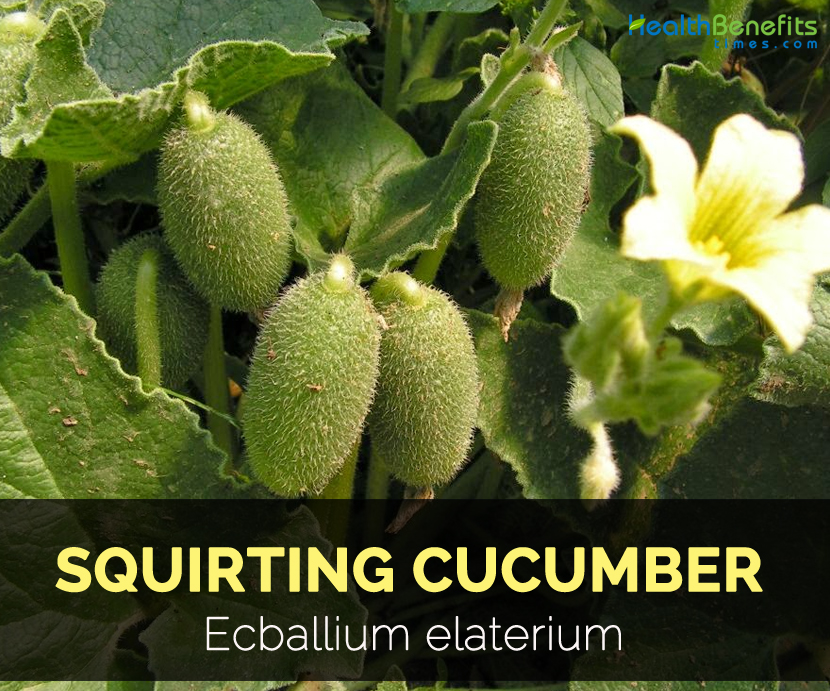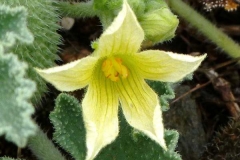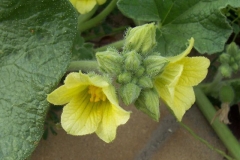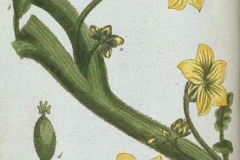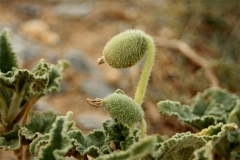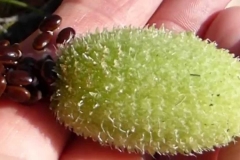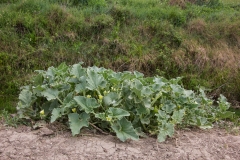It is a fragile vine having small greenish to yellow flowers found in sandy roadsides, marshes and low woods. The stems forms several from same root and cylindrical, without tendrils and prostate. Leaves are alternate, heartshaped. The plant flowers in July. Blooms are symmetrical and bisexual. Male flowers in clusters having bell shaped and yellow green veined corollas. Females are monoecious and solitary followed by a small fruit which is elliptical greenish gourd covered with soft triangular prickles. The seeds are black, reticulated and compressed.
Medicinal Action and Uses
- It promotes the flow of urine and used to treat dropsy.
- It eliminates effused fluid.
- The herb is helpful for lowering the painful sensation in neck of bladder.
- As a purgative, it causes evacuation of water from bowels.
- It is used to treat oedema related with kidney ailments, rheumatism, heart problems, shingles and paralysis.
- Use it externally for painful joints and sinusitis.
- It treats liver cirrhosis, sinusistis, edema, urinary tract infections.
Side effects
- In minor doses, it may cause the symptoms such as hemorrhages, diarrhea and kidney injuries.
- When used in excessive amounts, it causes gastro-enteritis and even death.
- In large doses, it causes vomiting and nausea.
- Not to be used by pregnant women as it can result in abortion.
References:
https://botanical.com/botanical/mgmh/c/cucus124.html
https://en.wikipedia.org/wiki/Ecballium
https://www.britannica.com/plant/squirting-cucumber
https://www.henriettes-herb.com/eclectic/kings/ecballium.html
http://mediplantepirus.med.uoi.gr/pharmacology_en/plant_details.php?id=175
https://www.botanical-online.com/en/medicinal-plants/squirting-cucumber-toxicity
Comments
| Squirting cucumber Quick Facts | |
|---|---|
| Name: | Squirting cucumber |
| Scientific Name: | Ecballium elaterium |
| Origin | Mediterranean region |
| Colors | Bluish green |
| Shapes | 4-5 cm (1.6-2 inches) long, oval capsule |
| Taste | Bitter, somewhat acrid |
| Name | Squirting cucumber |
|---|---|
| Scientific Name | Ecballium elaterium |
| Native | Mediterranean region |
| Plant Growth Habit | Trailing herbaceous plant |
| Soil | Well-drained |
| Leaf | Heartshaped, rough, triangular |
| Flower | Yellow, bell-shaped, 15-50 mm diameter. |
| Fruit shape & size | 4-5 cm (1.6-2 inches) long, oval capsule |
| Fruit color | Bluish green |
| Fruit Taste | Bitter, somewhat acrid |


